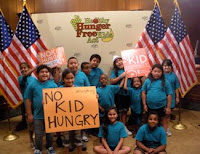
“Eating is not merely a material pleasure. Eating well gives a spectacular joy to life and contributes immensely to goodwill and happy companionship. It is of great importance to the morale.” Elsa Schiaparelli, Shocking Life, 1954
In terms of food, the important things are the simple things: meals prepared for loved ones; nurturing food given generously; homegrown produce eaten in the garden; and bread, the staff of life, broken together. In the words of the wise dietitian, Ellyn Satter: “Eating is about regard for ourselves, our connection with our bodies, and our commitment to life itself.” Secret of Feeding a Healthy Family, Kelcy Press, 1999
As the holiday season gets ready to kick into high gear, my nutrition thoughts are not so much about what to eat, but about how to eat. Since the beginning of human culture, eating together has been important to families and communities – and the rituals that bind us together. This is as true for a weekday family dinner as well holiday meals like Thanksgiving, Christmas, and Passover, shared meals like church potlucks and office parties, celebratory meals like birthdays and anniversaries.
Sadly, in our fast food culture, everyday meals have too often been seen as something to get through quickly – so that we can get on to something more important. And holiday meals have become a double-edged sword – over-indulgence in way more rich food than anyone needs combined with nagging guilt about our thighs, waistlines, and cholesterol levels.
In any season, cooking and eating together are among the simple things that can being us comfort and joy. The connections we seek - nourishment, health, communication, and family bonds - are as close as our kitchens and dining rooms. Here are some very simple gifts that you can give your family - throughout the holidays and every day of the year.
Cook together. Preparing food is a loving way to share time and bring generations together. Measuring, stirring, and chopping can be as comforting as other routine, everyday tasks. Kneading bread can be downright therapeutic.
Eat together. Make family meals a real priority as often as you can. If you live alone, reach out to family, friends, or co-workers – and break bread together. Eat together at home, eat together at restaurants, eat together at work, eat together at a picnic.
Turn off the television. In our 24/7, panic-button news cycle, television makes it virtually impossible to eat well. The repetitive images of disasters, war, and political bickering can literally make us sick to our stomachs. Take a break from the news and focus on the tastes, smells, and textures of food.
Return to rituals. Families have many rituals for meals – prayers, a moment of silence, joining of hands, candles, or festive touches, like flowers and special dishes. Making rituals part of everyday meals ties us to the past and to hope for the future.
Take time to share. Slow down and share – food, fellowship, memories, tears, laughter, and the joy of time together. Even small children can learn to share in conversations at the table. Give everyone time to share what is important to them.
Invite others to join you for a meal. A sense of community contributes to everyday well-being and to longevity. By joining with others around the table, you can begin to take comfort from the nourishing food and loving companionship.
 The American Dietetic Association (ADA) and the ADA Foundation have launched a new initiative, Kids Eat Right. The new website is packed with easy-to-use content - tips, recipes, and videos - all created by Registered Dietitians (RDs), including some by yours truly!
The American Dietetic Association (ADA) and the ADA Foundation have launched a new initiative, Kids Eat Right. The new website is packed with easy-to-use content - tips, recipes, and videos - all created by Registered Dietitians (RDs), including some by yours truly!





